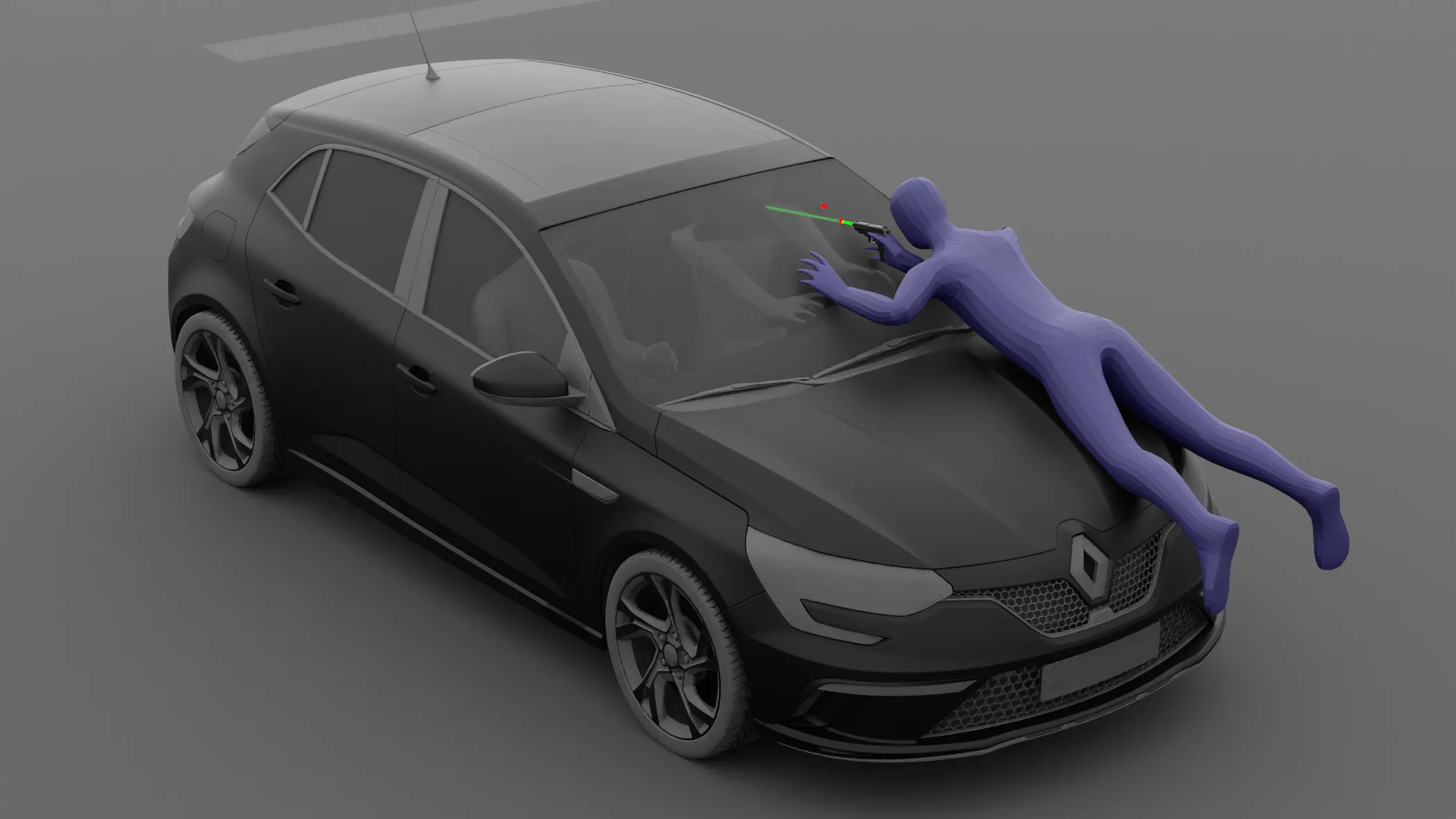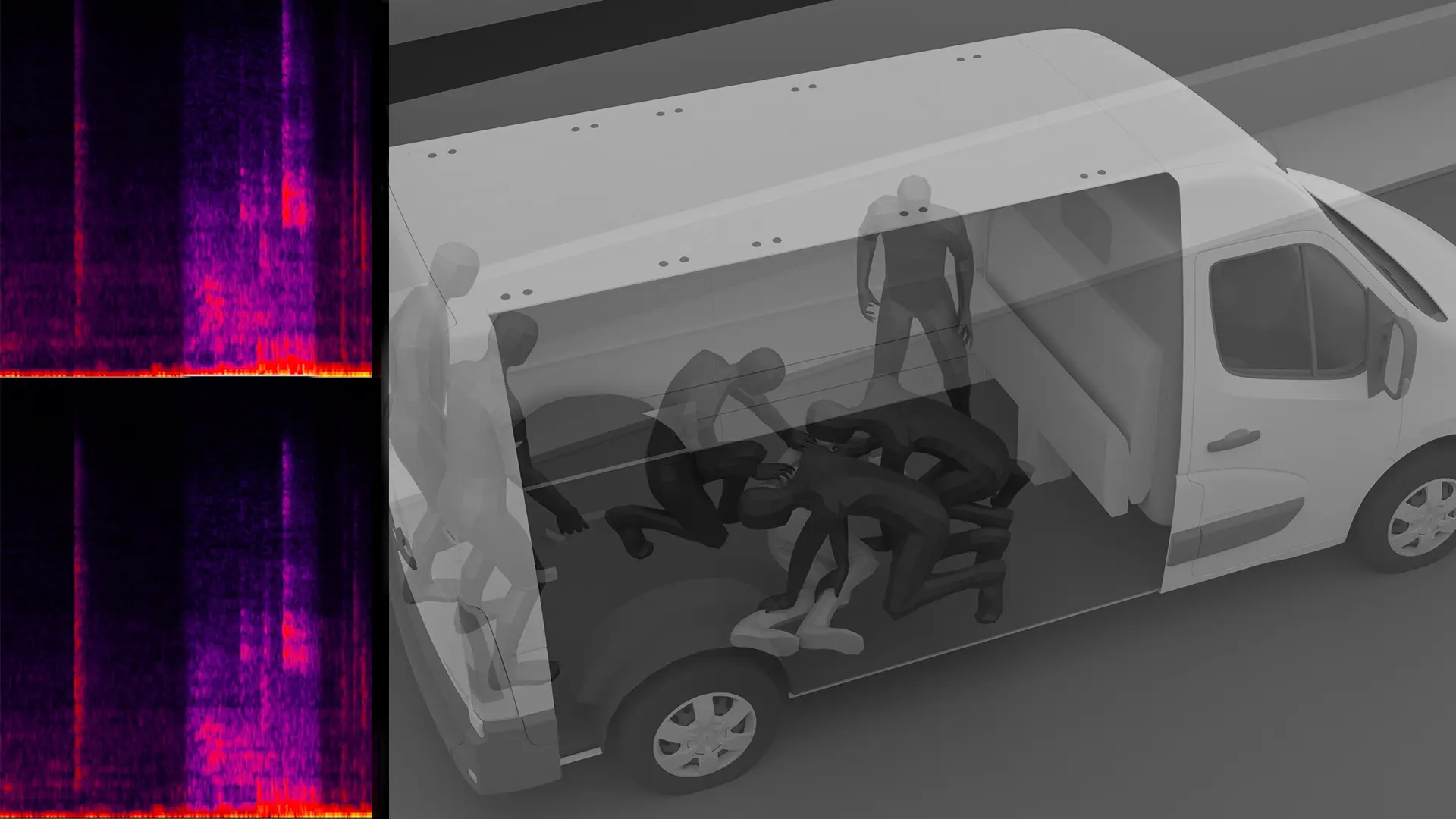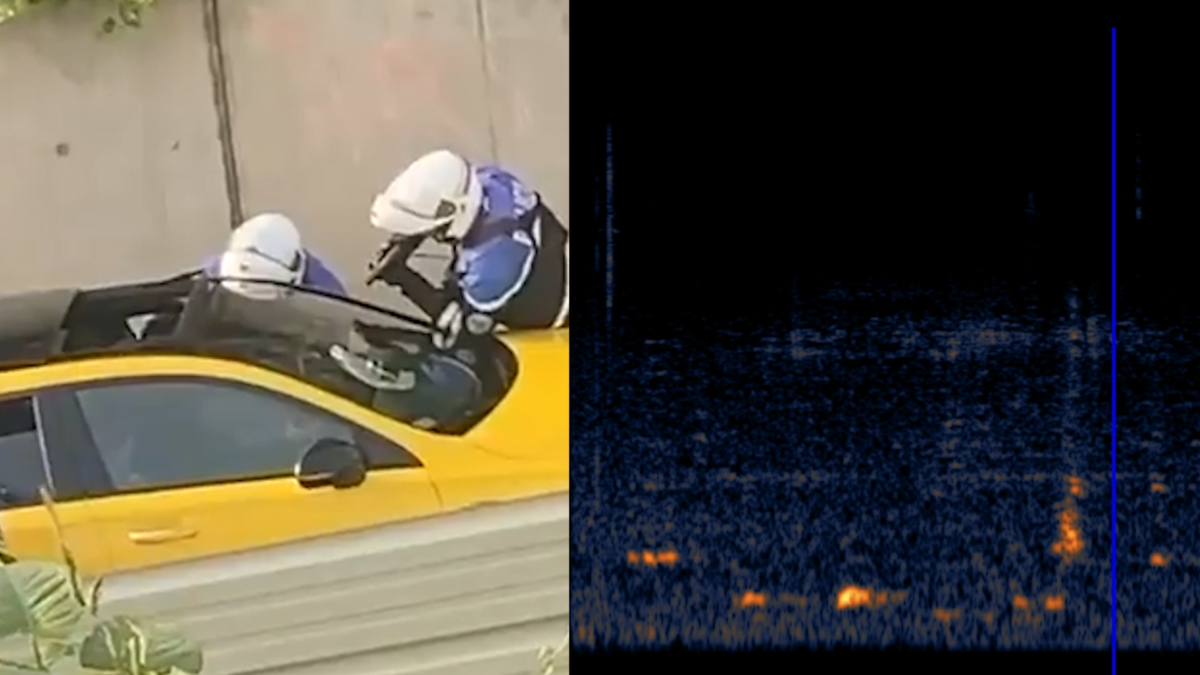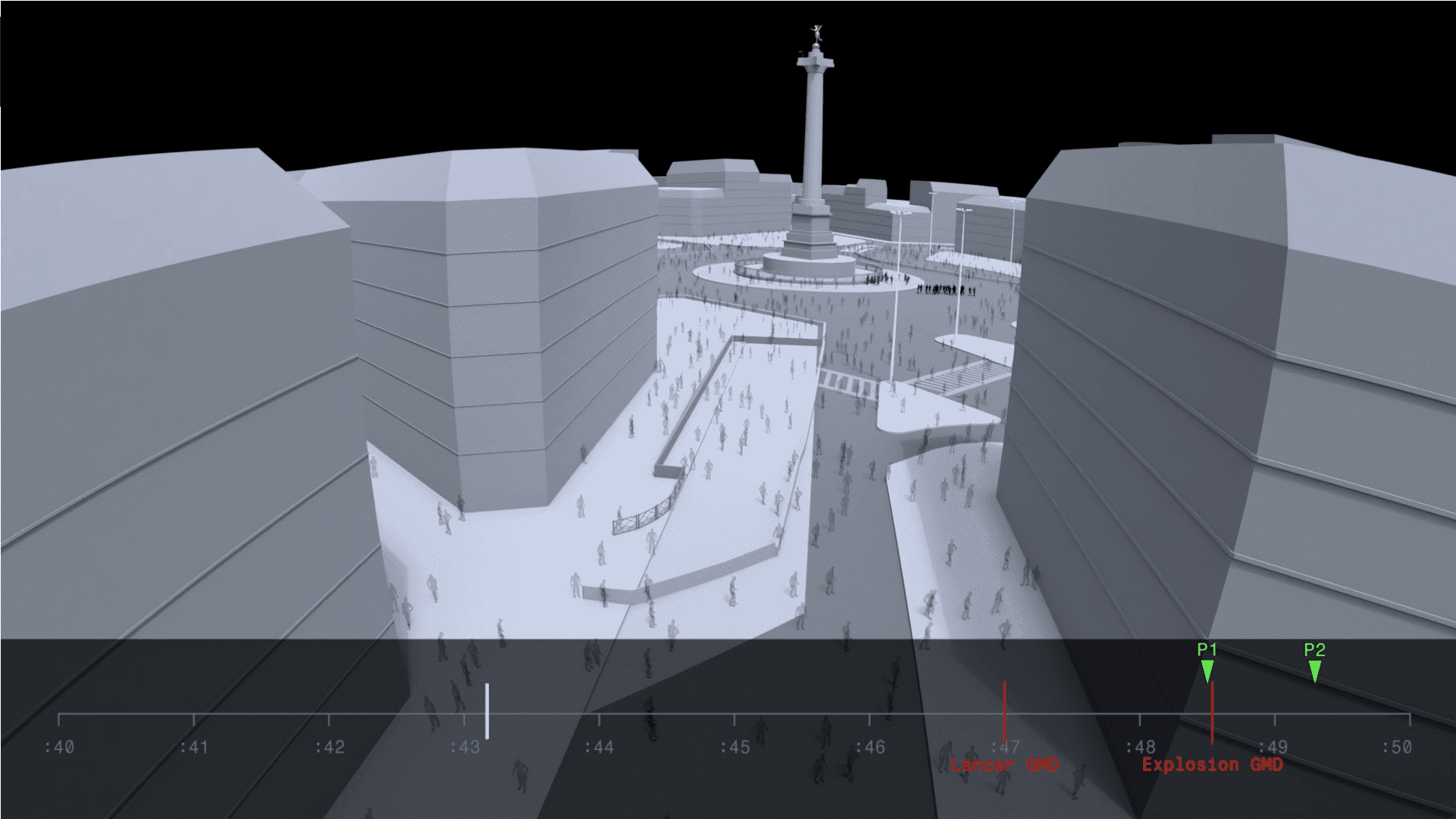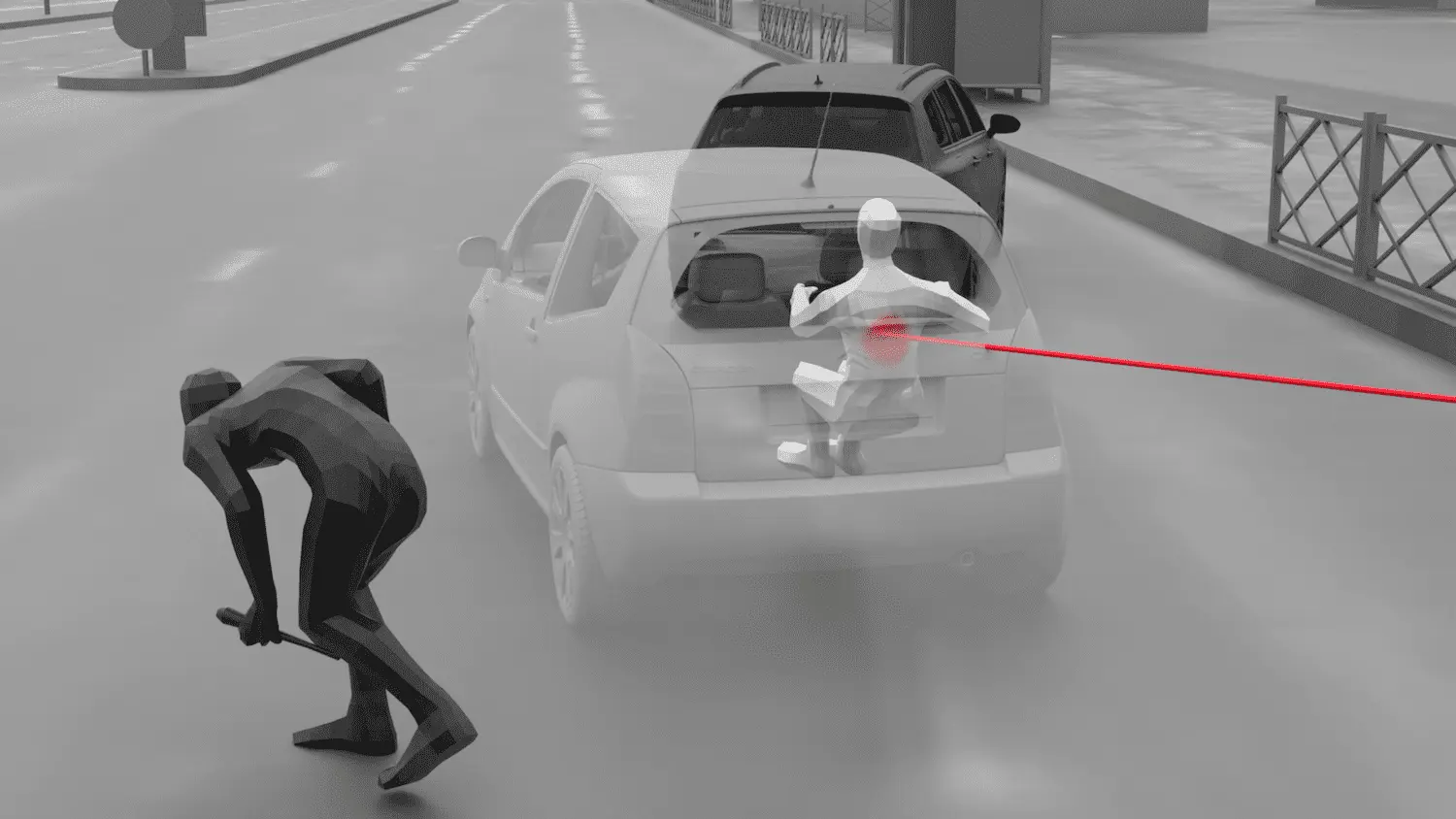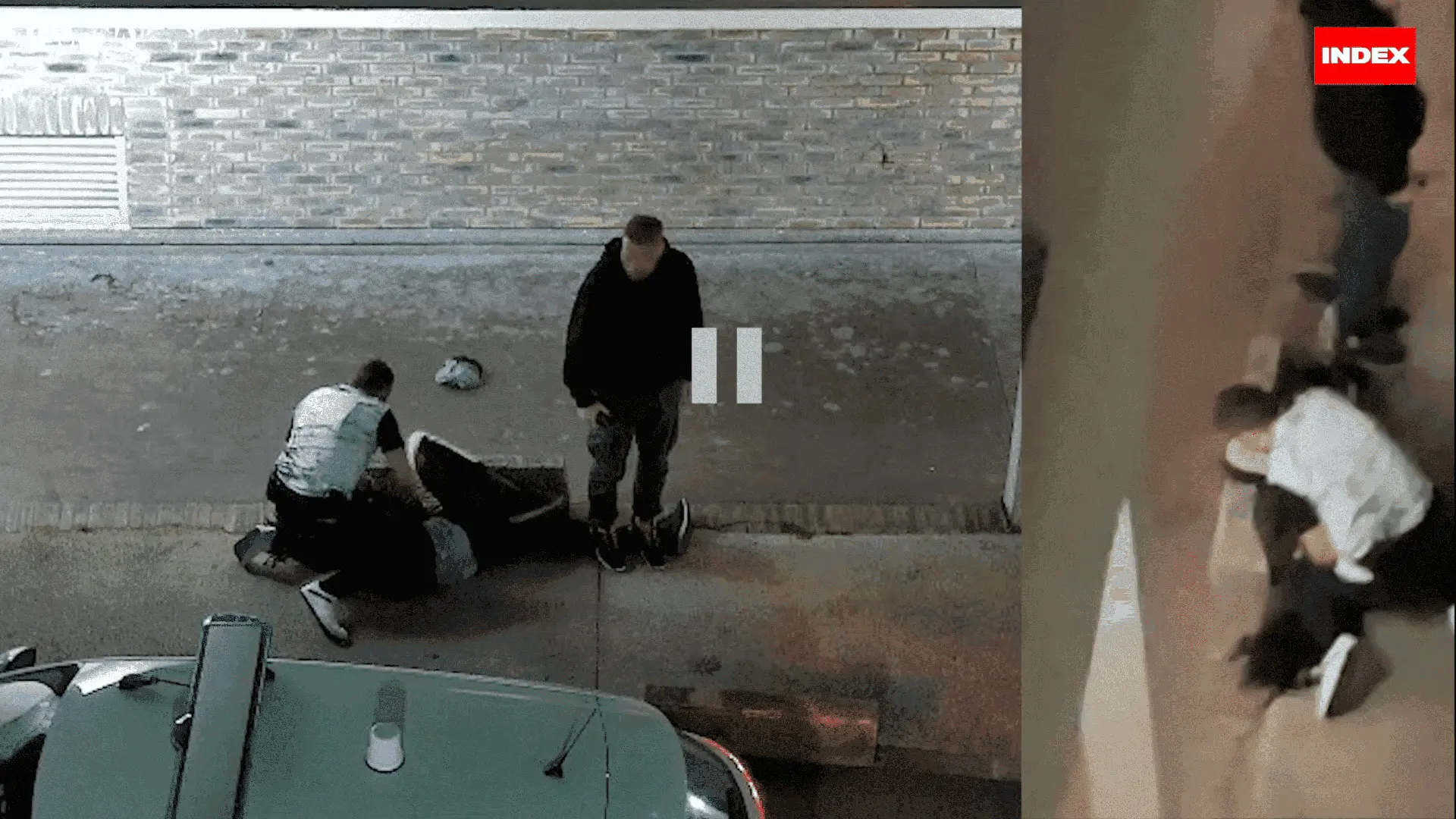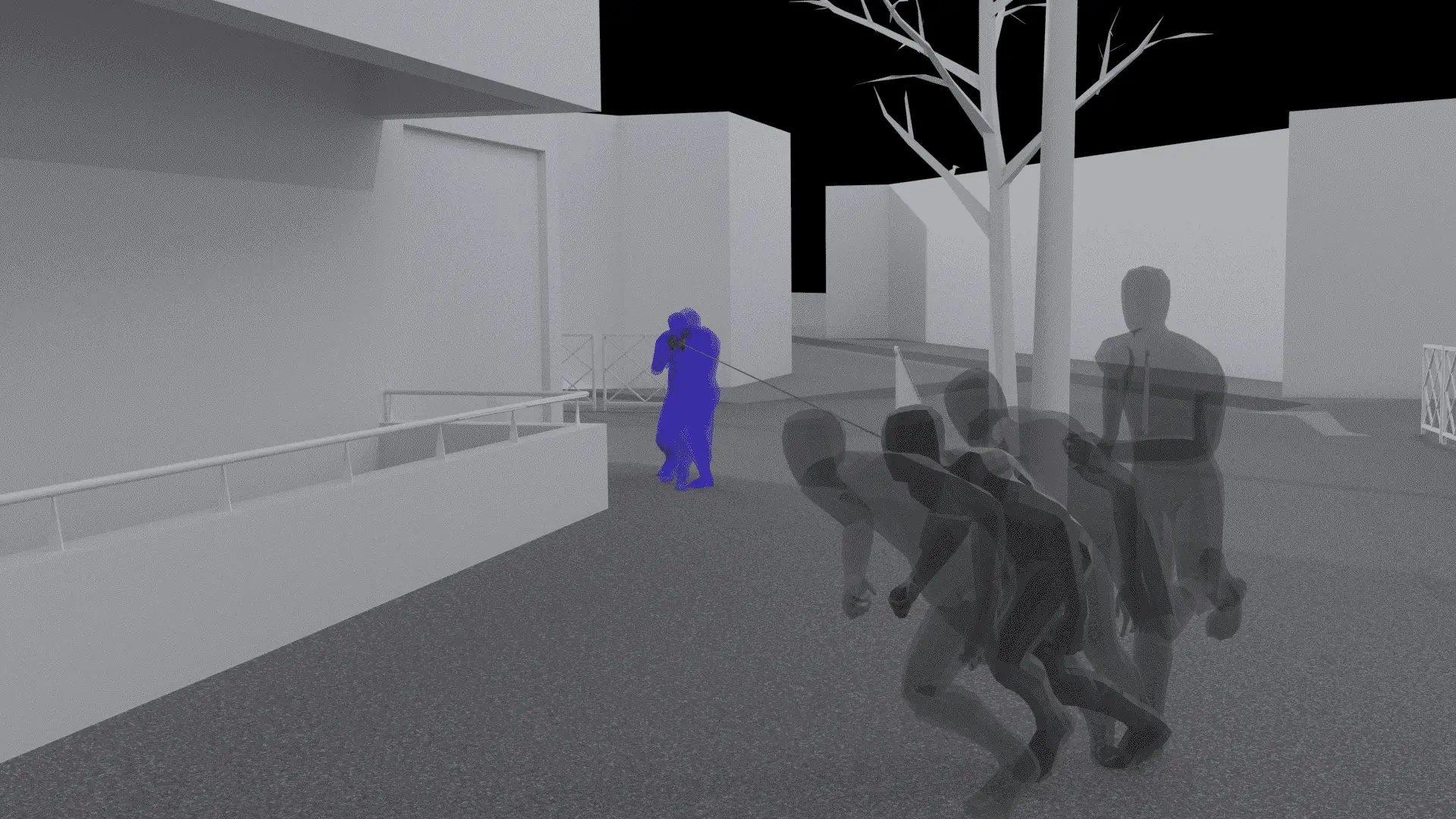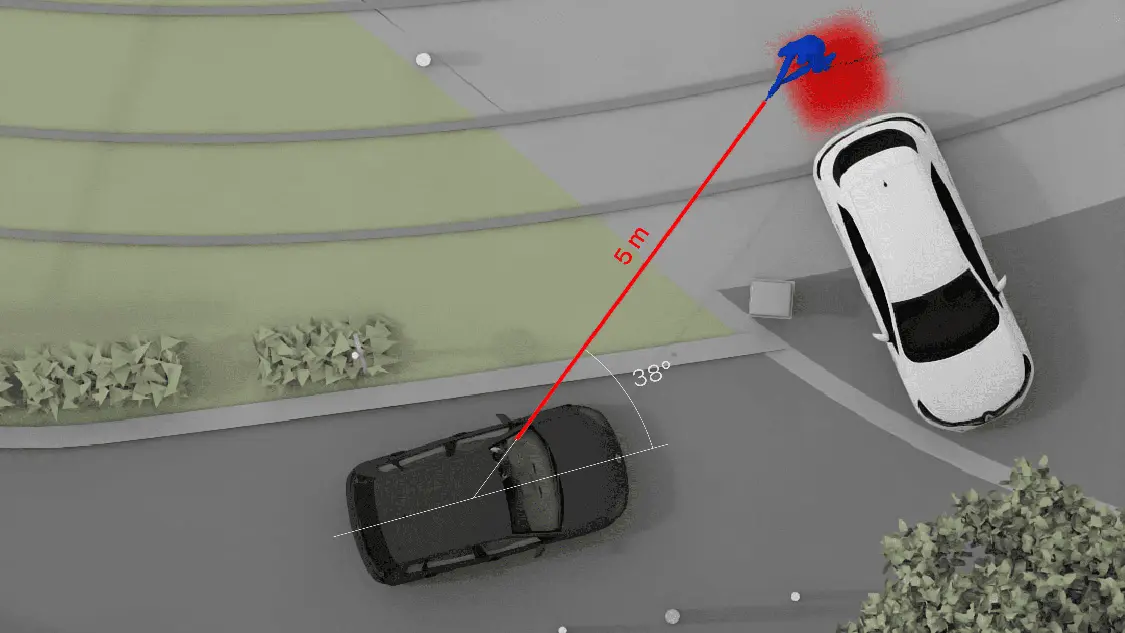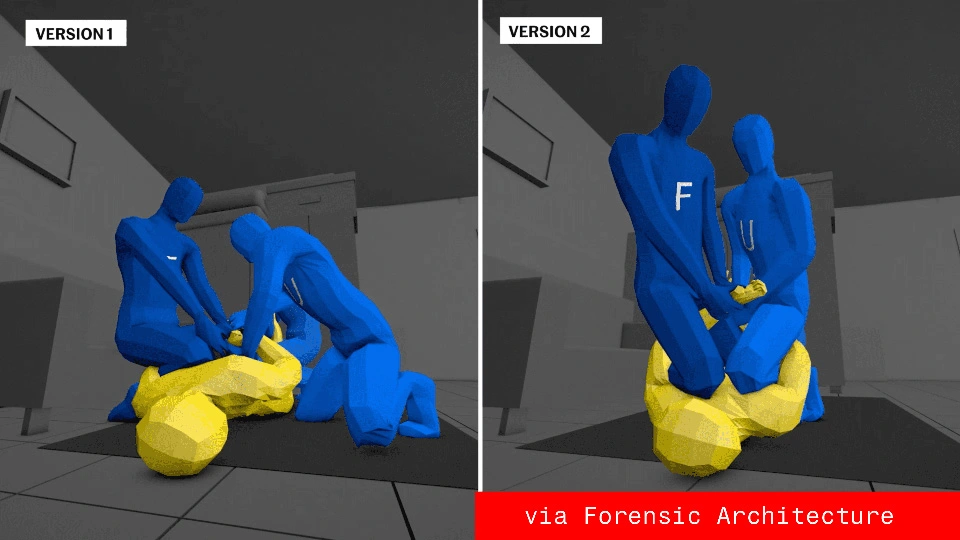Killing of Bilal M. : 3D reconstruction invalidates police version
On 23 June 2021, Bilal M., 34, was killed by police officers as he was being evicted from his flat. The police pleaded self-defence, accusing Bilal M. of attacking them with a knife. INDEX conducted a counter-investigation and reveals major inconsistencies in the police version of events.
Date of incident
23.06.2021
Location
Pierrelaye (95), France
Consequence(s)
Death
Keyword(s)
Partner(s)
On the morning of the 23rd of June, 2021, four police officers accompanied a bailiff as he entered a small building in the centre of Pierrelaye (95), in the Paris suburbs. At around 9.45am, following the intervention of a locksmith, the police entered a flat where the tenant, Bilal M., a 34-year-old man, was being evicted.
A few minutes later, Bilal M. was lying on the floor in the middle of his living room, handcuffed, with a gunshot wound and the marks of a Taser shot on his body. He was unconscious and bleeding profusely. He was pronounced dead at 11.01am.
According to the autopsy report, Bilal M. was shot in the back: the bullet entered his left shoulder blade and ended up in his right lung. This trajectory caused “severe” injuries, leading to Bilal M’s death “in a very short space of time”.
The police officers involved – who were also the only eyewitnesses to the incident – pleaded self-defence. They claim that Bilal M. brutally attacked them with a knife and that they had no choice but to defend themselves.
The investigation was closed on 4 February 2022. The Pontoise prosecutor’s office accepted the officers’ version of events, stating that “the police officer, who once used his service weapon, acted in response to the unjustified and unpredictable attack by Mr [Bilal M.]”.
Using all the documents in the court file, INDEX reconstructed the events and created a 3D model of the scene and the actions of the people involved. This reconstruction reveals major inconsistencies in the police version of events and casts doubt on the self-defence argument retained by the courts to date.
A routine eviction
According to those close to him, Bilal M. is going through a difficult period at the start of summer 2021. The lockdown imposed following the Covid-19 epidemic has made his economic situation much more precarious. Following a break-up, Bilal M. has withdrawn into himself and spends a lot of time alone in his flat. Some of his neighbours in the building complain of nuisance, while unpaid rent is piling up.
The eviction proceedings against Bilal M., which had been initiated a year and a half earlier by the owner of the flat, were finally carried out on the morning of 23 June 2021. The appointed bailiff requested police assistance, and four officers from Herblay police station accompanied him: Major Didier P., Brigadier Vanessa V., and officers Guillaume R. and Jack V. Bilal M.’s eviction was the second to be carried out by the bailiff and the four officers that morning.
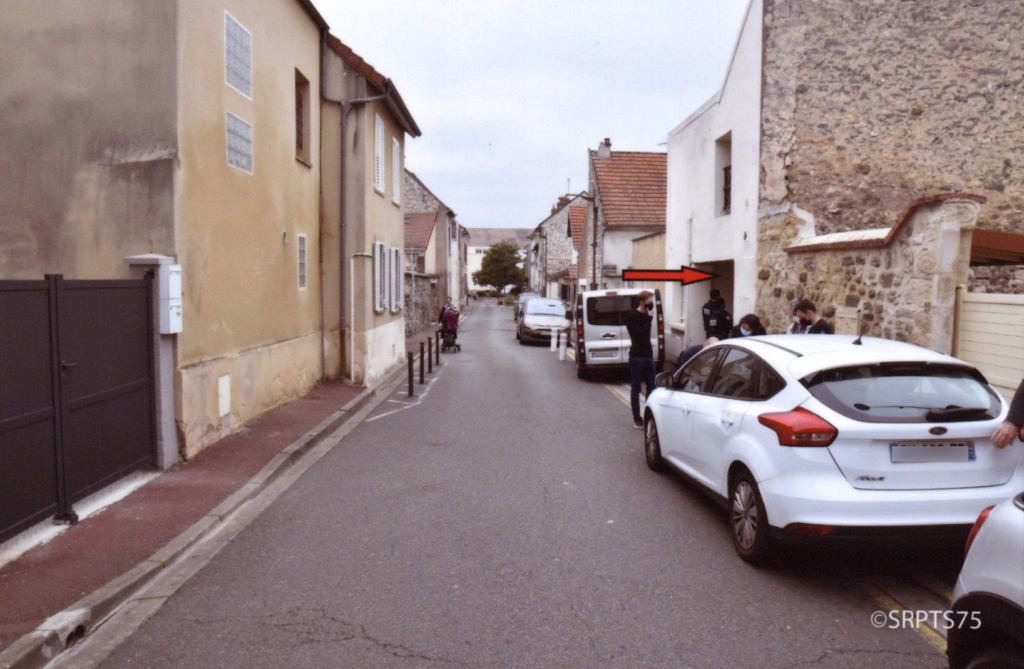
Interviewed by the IGPN after the incident, the police officers described an “anxious” atmosphere as they approached the premises. The bailiff had told them rumours about the evicted occupant, who was said to be “mad” or even “schizophrenic”. While the bailiff remained on the doorstep, the police officers entered the flat “feeling in danger”, they reported. However, each of the four officers was carrying his service weapon, bullet-proof waistcoat and tactical equipment. As the crew made their way along the entrance corridor, Brigadier Vanessa V. drew her taser.
Once in the living room of the flat, the police found a man lying on the sofa, apparently sleeping under a blanket. Major Didier P. allegedly went upstairs to secure the flat and remained there until the shot was fired. The three other police officers then positioned themselves around Bilal M., whom they suspected of pretending to be asleep.
In their respective interviews, all three mentioned that a telephone placed on the edge of the sofa was playing “Arabic” music; police officer Guillaume R., who fired the fatal shot, said:
“… the music was strange, it sounded like religious chants.”
Positioned between his two colleagues, Guillaume R. then leaned over Bilal M. and pulled back his blanket to uncover him.
No knife near the body
The narrative of what followed, as given by each of the police officers at their first hearing, reveals glaring inconsistencies among their respective versions.
Guillaume R. states:
“… and then he raised a large knife, the blade of which must have been at least 30 cm long. […] The man started gesticulating in all directions with his knife, pointing it at me and at Jack.”
He goes on to say:
“… I saw him advance towards Jack and point his knife in the direction of my colleague’s throat.”
Jack V., for his part, declares:
“It was a white steel kitchen knife, about 10 cm long […]. He started to get up, pointing this blade at Gpx [R.] or Brigadier [V.].”
Finally, Brigadier Vanessa V. states:
“The individual […] pulled a knife with a blade of about 20 cm and threw himself at me, trying to stab me.”
Each of the three witnesses, who are also the only suspects, gives a substantially different version of the story, in terms of the type of weapon Bilal M. suddenly brandished in front of them and the direction in which he pointed it.
In fact, no knife was found near the victim’s body by the IGPN investigators. Only a knife sharpener measuring 30 cm, and a kitchen knife with a white blade measuring 13 cm, were found in the apartment, behind the kitchen counter.
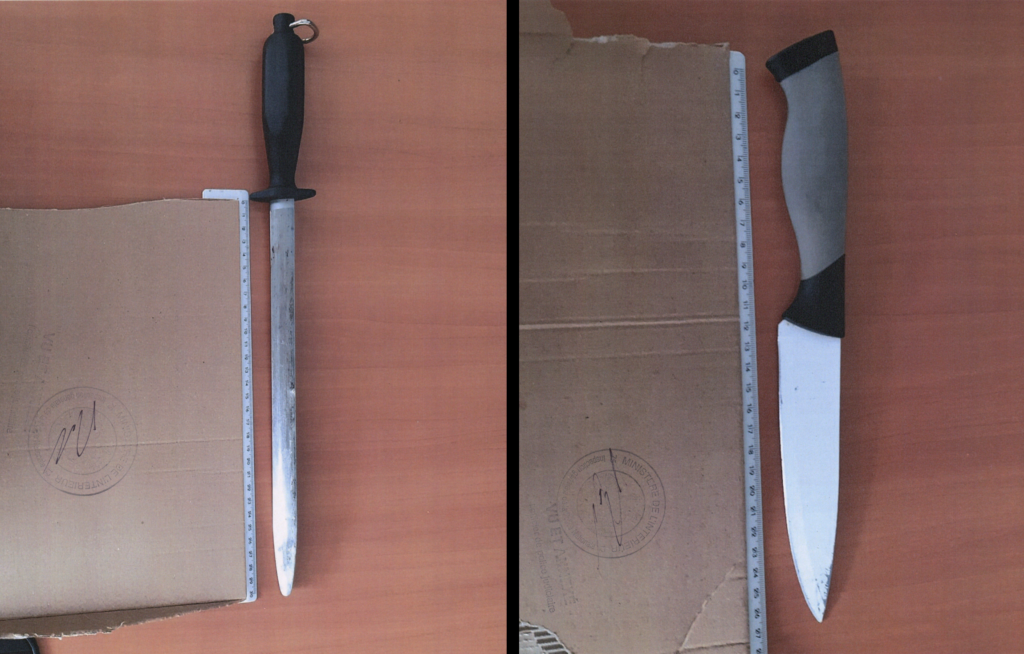
The police officers explain that they moved the knife themselves; but again, not without contradictions.
Brigadier Vanessa V. is the only one of the three officers to mention a second knife, which she says she discovered under the sofa after using her Taser. In response to the IGPN’s question “What did you do with the knives?”, Brigadier Vanessa V., the officer in command, replied:
“At first we kept them away from the individual, then one of my two colleagues took them and put them behind the bar in the kitchen.”
As for police officer Jack V., he declared in his first interview:
“All of a sudden, I stood up and moved the knife further away in the kitchen because we didn’t know if this man was faking it and to avoid any risk of serious injury.”
Jack V. reports having moved only one knife.
In this case, the knife or knives mentioned by the police officers represent the only material evidence of the threat posed by Bilal M. to them, before they shot him dead. However, the police statements concerning the knife(s) are riddled with contradictions, whether in terms of the description of the knife Bilal M. is said to have held up, the gestures he is said to have made with the knife in hand, or the actions and movements that would explain why no knife was found near the victim.
IGPN “role-play”
Rather than questioning the police officers separately about these inconsistencies in their respective accounts, the IGPN investigators organised a “role play” on the evening of the incident. In one of the office rooms on their premises, supposed to represent Bilal M. ‘s flat, the police officers implicated were invited to play their own role in the incident, as well as to “position” the IGPN investigator who was playing Bilal M. ‘s role.
During this key stage in the procedure, the contradictions between the police officers versions of the events were erased, replaced by a single version of the facts. This was recorded in a report drawn up by the IGPN inspectors and documented by photographs.
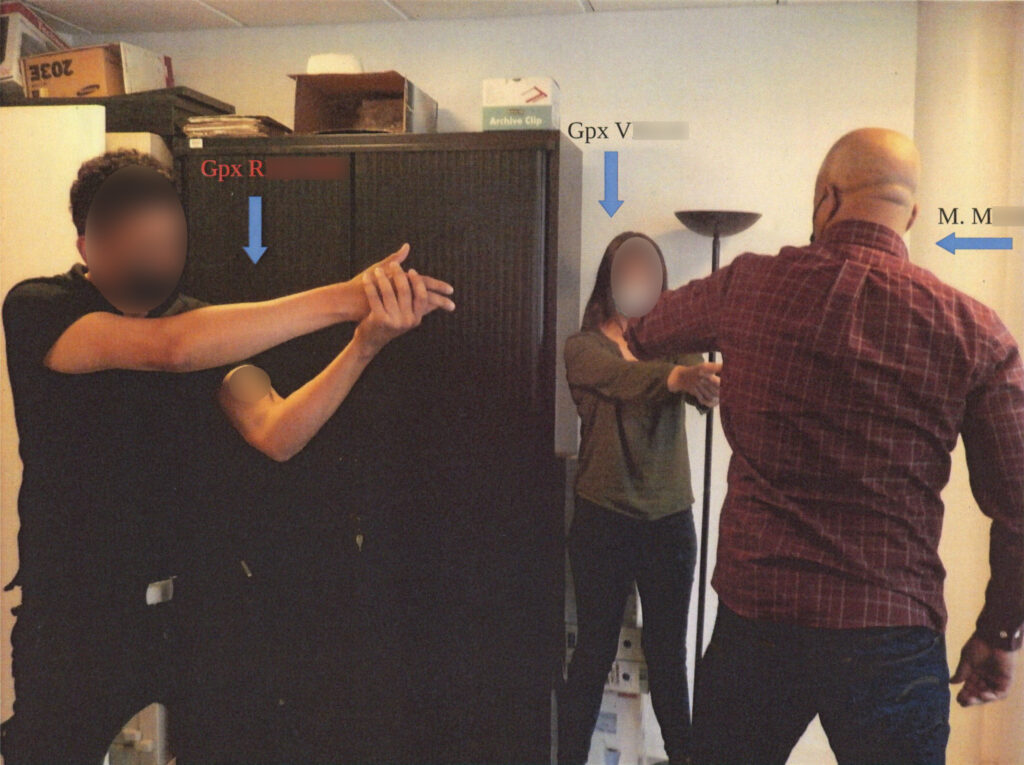
One image in particular shows the moment when Bilal M. allegedly struck Vanessa V. with a knife sharpener. In response, Vanessa V. and Guillaume R. are said to have fired at him simultaneously: Vanessa V. with her Taser and Guillaume R. with his semi-automatic handgun.
Later in the investigation, a national French gendarmerie officer was appointed as a ballistics expert in the case. The expert relied on the same photograph to establish his report, where he concludes that “the statements [of the police officers] do not show any incompatibility with the relative orientation of the weapons in relation to the victim”.
A two-fold inconsistency
Using the same image, INDEX reconstructed the presumed moment of the shooting in a 3D model of the flat. Once the positions of Bilal M. and the police officers are reconstructed in line with their accounts, two major inconsistencies emerge.
Firstly, the trajectory of the bullet that hit Bilal M. in the upper left shoulder is downward. Bilal M. was 186 cm tall. It is therefore impossible for him to have been standing in front of Guillaume R. when he was hit. At the time a 9mm bullet passed through his upper body with such a trajectory, Bilal M. was necessarily in an inferior position compared to Guillaume R.
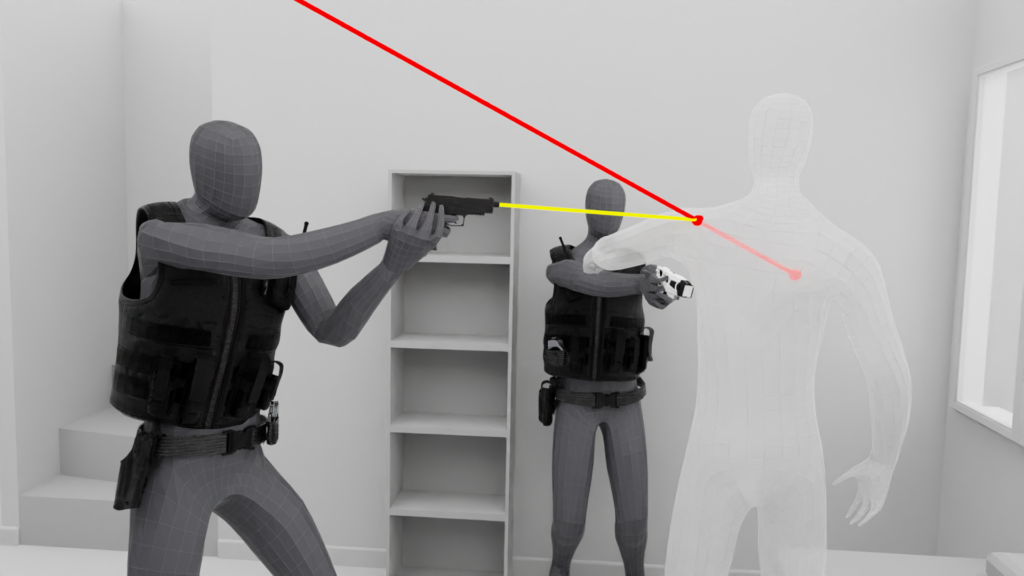
Secondly, Bilal M.’s autopsy revealed two injuries caused by a Taser shot: one on his thorax, the other on his right elbow. Bilal M.’s position as described in the scenario is incompatible with the injury located on his right elbow. When he was hit by the taser, Bilal M.’s right elbow must have been pointing towards Brigadier Vanessa V.
“Everything happened very quickly”
In addition to these two inconsistencies pertaining to positions in spaces, a third inconsistency appears when considering the timing of the action.
According to the police officers’ account, once Guillaume R. had taken off his blanket, Bilal M., who was lying on his back at the time, turned over on his stomach, plunged his left arm under the sofa to retrieve a knife sharpener, then stood up, brandishing it around the room, “gesticulated from left to right”, before pointing his weapon at Vanessa V. It was at this point that the police shot him.
We carried out a dynamic reconstruction of Bilal M.’s alleged movements in a 3D model. According to this reconstruction, the minimum time required to perform all of these gestures is necessarily greater than five seconds. This is consistent with the estimate of “a few seconds” given by police officer Guillaume R. during his hearing.
Throughout this sequence of actions, the three police officers would have therefore remained passive, having no reactions, until two of them fired their respective weapons at Bilal M. simultaneously.
When IGPN investigators asked them if they had issued a warning before firing, the police officers explained that they didn’t have the time to do so. “It went too fast”, said Guillaume R. ; “Everything happened very quickly”, repeated Vanessa V.
However, nothing seems to explain why Vanessa V., who was holding Bilal M. at gunpoint while he was still lying on his back on the sofa, would have passively watched the whole scene, without ordering Bilal M. to stop, or using her Taser before he allegedly got in a position to threaten her. The brigadier spoke of a “reflex shot” ; yet she would have fired several seconds after perceiving the danger she described. Additionally, the data extracted from her Taser shows that the safety was removed 23 seconds before the shot was fired.
According to the police officer’s account, Guillaume R. also did not react to Bilal M.’s threatening gestures until, “to stop an attack […] on [his] colleague”, he finally drew his weapon and “fired immediately”. As he fired, Guillaume R. said that he “pointed [his gun] in the direction of his upper body”. Similarly, nothing seems to explain why Guillaume R. – who at the start of the scene was leaning over Bilal M., who was still lying on the sofa – would have let the individual get up in front of him, grab and brandish a gun in their direction, only to shoot him five seconds later, without warning, at point-blank range and in a lethal area of the body.
The police version of events is not only incoherent with the material evidence established by Bilal M.’s autopsy, but also unconvincing when considering the timeframe of the action described. Everything seems to indicate that things didn’t go as reported by the police. So how did Bilal M. die?
“He wasn’t standing up”
During their respective hearings, the police officers mentioned several elements, which were not taken into account in the IGPN reconstruction, which seemed to indicate that the shot had been fired before Bilal M. had actually stood up:
In her second hearing at the IGPN, Brigadier Vanessa V. stated:
“When this man took the knife from under the sofa, he got up: he was on his feet, in full dynamic lift, but he wasn’t standing up.“
When asked about Bilal M.’s precise position when he allegedly threatened them with a knife, police officer Jack V. said:
“I can’t tell you. I can’t remember whether he was semi-flexed or standing.”
The interview with Major Didier P. provides another important piece of information. He states that he was upstairs when the shot was fired, and that he joined his colleagues in the moments following the detonation. He states:
“I asked [Guillaume R.] in which direction he had fired. He pointed to the back of the sofa, so I looked for the bullet without finding it.”
Finally, when asked about his position at the time of the shooting, Guillaume R. states:
“I must have been less than two metres from him.”
From his standing shooting position, less than two metres from Bilal M., a shot aimed at the back of the sofa would have a clear downward trajectory, requiring Bilal M. to be positioned below him.
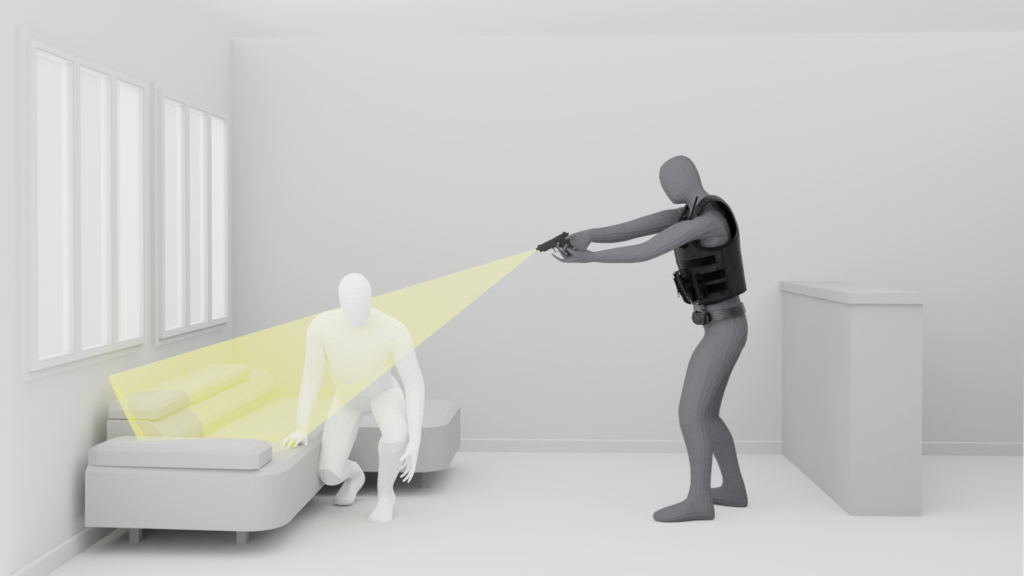
The digital reconstruction of all Bilal M.’s movements, as described by the police, reinforces the hypothesis that the shot was fired before the victim got to his feet.
Indeed, an analysis of the respective positions of Guillaume R. and Bilal M. during this scene shows that the trajectory of the shot is directly compatible with the injuries established during the autopsy, as long as the victim was at the foot of the sofa or in the process of getting up.
As previously demonstrated, the trajectory of the shot is incompatible with Bilal M.’s injuries if he is standing in front of Guillaume R.
According to police statements, once he was hit, Bilal M. would have “fallen back onto the sofa in a semi-seated position”.
However, if Guillaume R. had fired his shot while Bilal M. was still in the process of standing up, it is plausible that the impact would have caused him to fall back onto the sofa on his back, in a position where his right elbow would have been facing Vanessa V.
A possible Taser shot, which would have occurred after the bullet impact, would then have been compatible with the two injuries found on Bilal M.’s body, on the thorax and elbow respectively, with a “right to left” direction as established in the autopsy report.
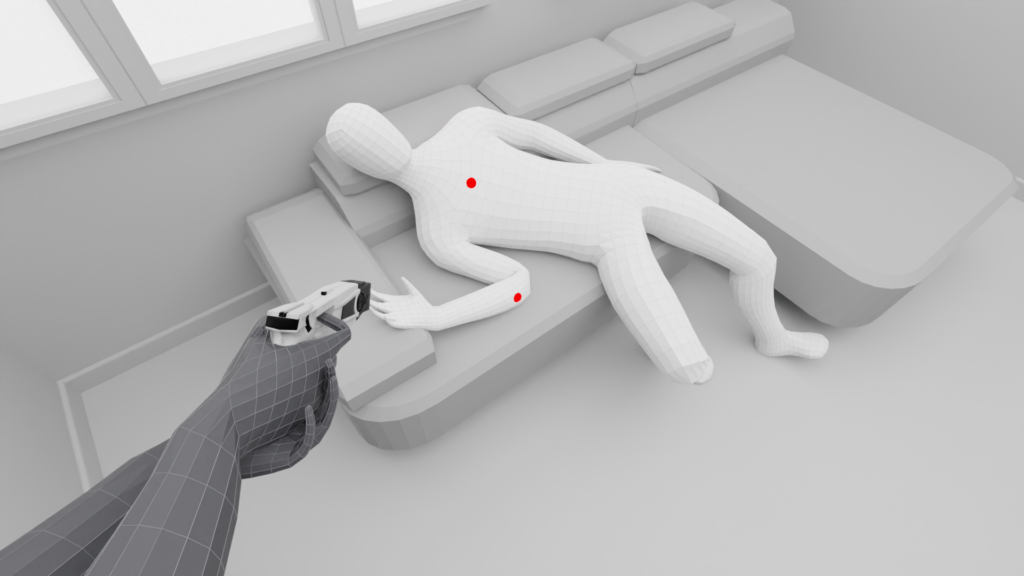
The study of positions carried out in the digital reconstruction model brought to light the possibility of a different dynamic of action from that reported by the police, in which Guillaume R. shot Bilal M. while he was still getting up from the sofa, after which Vanessa V. shot him with a Taser.
Based on the material elements available, the 3D reconstruction does not allow us to affirm that such a dynamic actually corresponds to the reality of the circumstances surrounding Bilal M. ‘s death. This alternative reconstruction hypothesis is, however, entirely consistent with the findings of the autopsy report on Bilal M.’s body by the autopsy report – unlike the police version of events, which has so far been accepted by the courts.
A still-open investigation
On 23 June 2021, during a police operation to carry out an eviction, a man died.
Bilal M. was killed by an intentional shot fired by a police officer, who claims to have aimed “at his upper body”.
From a legal point of view, the burden of proof lies with the individual claiming self-defence: it is their responsibility to prove that all the conditions for the applicability of the self-defence clause are met ; in particular, that the said individual acted upon a real and present threat, and that their response was necessary, simultaneous and proportional to that threat.
Far from having provided this proof, the version of events given to the courts by the police is invalidated by the material elements established by the autopsy report, as demonstrated by the 3D reconstruction carried out by INDEX.
In January 2022, the complaint filed by Bilal M.’s family led to the opening of an judicial investigation. Two and a half years after the event, the investigation is still open.
Team
| Investigation | Filippo Ortona Francesco Sebregondi |
| 3D Modeling / Animation | Nadav Joffe Lorène Albin |
| Video editing / Motion Design | Basile Trouillet |
| Coordination / Production / Voice | Francesco Sebregondi |
| Restoration assistance | Malik Lacheheb |
Press
| Blast (publishing partner) 01.02.2024 | Killing of Bilal M. : 3D reconstruction invalidates police version |

